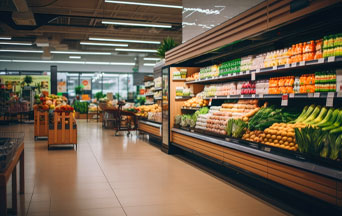
Shoppers have long been told of the advantages of self-checkout. It is supposed to help them avoid lines and make purchasing faster and more convenient. For decades, retailers have installed scanning machines everywhere to get everyone on board with automation.
Now, retailers are feeling the backlash of consumers who have had enough of serving themselves. They want human social interaction back.
Self-scanning groceries is an expression of radical individualism. It makes consumers more autonomous since the technology allows them to minimize contact with other humans. The customer is in total control of the buying process.
Self-checkout is also the consequence of corporate cost-cutting. Retailers have welcomed the move because they don’t have to deal with employees. Expensive self-checkout machines, once bought, do not ask for wage increases, take coffee breaks or call in sick. The retailers can also use the scanners as a pretext to recruit shoppers to do the work of cashiers at no extra cost.
Chains Are Removing Self-Checkouts
However, self-checkout is running into problems. In theory, it should make things quick and easy. In the real world, however, some find the temperamental little machines a nightmare. As shoppers push back, some devices have found themselves out of a job.
One grocery chain in northern England, Booths, announced the removal of self-checkouts in all but two of its 28 stores. The chain has been selling groceries in England since 1847. It prides itself on listening to its customers. Officials say the customers are saying enough is enough. Booths is bringing the cashiers back.
Eternal and Natural Law: The Foundation of Morals and Law
Major American retailers like Kroger, Cosco and Walmart are also scaling back on the scanners as they face customer resistance. The trend represents a major reset in retail markets that have pushed hard to automate shopping over the last twenty years.
The Problem With the Machines
The problem with the machines is that they must deal with complexity beyond their capacity to interpret. The grocery world is not compartmentalized into neat categories that can be standardized well.
Sometimes, the scanner fails to recognize a code or needs repeat spans. Fresh vegetables and fruits are especially subject to misidentification. Some stores have special items like medicine and alcohol that require a store worker to process a purchase.
And then there are just plain malfunctions. The scanners have proven to require high and expensive maintenance. When the machine gets things wrong, a human must correct the situation. Some companies are asking if it is worth the trouble.
Retailers Feel the Pain
The retailers are also feeling the pain of self-checkout in their bottom line. The machines were supposed to solve the labor problem by being mechanical slaves that could work 24/7.
Retailers thought they could rely upon the machines, so they cut back on hired help on the floor. Many stores are now hopelessly understaffed and need help to keep up with the devices when they malfunction. The understaffed stores are also messier and less maintained. Time-conscious consumers find themselves waiting for assistance when the scanners go on the blink. It often takes more time, not less, to purchase items.
Thus, stores are bringing people back to watch the machines…and the people using them.
There is a more sinister problem related to the machines that many did not foresee.
 Learn All About the Prophecies of Our Lady of Good Success About Our Times
Learn All About the Prophecies of Our Lady of Good Success About Our Times
Retailers in Europe and America have found that self-service lanes and apps register a loss or shrink rate of around 4 percent, more than double the industry average for non-automated stores. Researchers claim self-checkout lanes tempt people to act in ways they normally would not act. In other words, self-checkout encourages shoplifting by making it less detectable.
Once again, overworked human helpers at the self-checkout lanes serve as the vigilant eyes and last line of defense to prevent significant theft. However, it is to little avail.
Machines Without Warmth and Affection
All these practical reasons are causes for rethinking the self-checkout experience/nightmare. However, the most important reason for bringing humans back is that cashiers are…well…human.
People are social beings who crave interaction with others. Machines cannot convey that warm welcome and concern that comes with even the most casual human contact. The shopping experience provides an opportunity to develop relationships and communicate with others. Some shoppers enjoy banter to the extent that some European grocery chains have special “chit-chat lanes” where cashiers are encouraged to interact with lonely customers.
Indeed, Booths said that its 3,000 employees interacting with customers provides a better shopping experience. “We have based this not only on what we feel is the right thing to do but also having received feedback from our customers. Delighting customers with our warm northern welcome is part of our DNA.”
The organic contact with others is missing in so many aspects of modern life. The problem is not limited to shopping but to all human activities that have been over-mechanized and standardized, making things so inhuman. Would that there might be more Booths that dare to challenge the cold mechanical standards of the day.
Photo Credit: © Baba Images – stock.adobe.com

